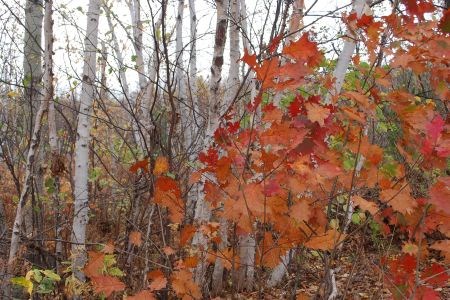Managing a forest involves much more than planting trees. Various users, ranging from commercial to recreational, have to be considered along with the flora and fauna.
“The issues and the forests here are unique in that they are in transition between the Boreal Forest to the north and the Great Lakes Forest in the south,” said Peter Street, manager of Nipissing Forest Resource Management Inc. and Vermilion Forest Management Company Ltd.
Street, who manages his time between the two companies to oversee both the Sudbury and Nipissing Forests, said both have been harvested for a couple hundred years.
The Sudbury Forest takes in an area that stretches from the French River to Lady Evelyn-Smoothwater Provincial Park and from Nairn Centre to Warren. The adjacent Nipissing Forest stretches from Warren to Mattawa and from Trout Creek to between Temagami and Marten River.
“There is a lot of historical activity in the forests which is somewhat challenging,” he said. “The forests are quite mixed with a variety of tree species. There is a lot more birch and poplar in these forests now than there was pre-settlement times so we are trying to return the forests to more pre-settlement conditions.”
That involves raising the amount of red and white pine in the forests and trying to maintain or increase hemlock and sugar maple.
“It is a challenge and takes quite a while to re-establish the forest,” Street said.
Three types of silviculture techniques are used to manage the two forests.
For shade-tolerant maples, about a third of the individual trees are harvested in a maple forest and in the following 20 to 30 years, another third is taken out. Different sizes are removed so the forest is of mixed age.
Mid-tolerant trees, such as oak and white pine, need about 50 per cent shade so about 40 per cent of the trees in the harvest area are removed.
Spruce, poplar, birch and jackpine require full sunlight and they have evolved to generate after forest fires so a clear-cut system is used for those areas.
“When harvesting a clear-cut area, we have a variety of sizes and cuts and we need 25 trees per hectare to remain standing in the cuts,” Street said. “We also have to leave insular and peninsular patches to emulate the pattern of fires.”
Both forests provide about 30 different mills with wood including operations in Pembroke, Espanola and Temiscaming, QC. The forests are also heavily populated, with the Sudbury one being the most populated in Ontario.
“There is an awful lot of recreational activity in both forests and if you add up all the users, such as hikers, ATVers and hunters, there could be from 5,000 to 10,000 people every weekend between the two forests,” he said.
Independent forest audits are done every five years and both forests have also received Forest Stewardship Council certification.
“It’s another set of eyes looking at what we do,” Street said.
The forest management plans identify how the forest will be managed, what areas will be harvested, what roads will be constructed or maintained and how it will be renewed.
“Once we have an approved five-year plan, we work with the different logging companies around here and we check in the field and in the areas that are to be harvested,” he said. “We would prepare a prescription on how they should be best harvested and we do compliance monitoring on all operations.”
The work of the forest management companies is also closely watched. The Ministry of Natural Resources (MNR) conducts its own compliance checks on them and other groups monitor what occurs in the forests.
“Not only do we follow the rules and regulations of the MNR, there is a social need to do a good job as well,” Street said. “We have resource stewardship agreements with tourist outfitters, most of which are road based, and they are interested in the timing of our operations and maintaining roads for their clients. We have remote tourist operators as well, the fly-in camps, so we want to make sure those businesses can survive too.”
The forests are at the northern range of a lot of species that are threatened due to activities in southern Ontario.
“There is a potential for about 50 threatened species of plants, animals and fish,” he said. “We are mostly concerned about, in our types of activities, the blanding and wood turtle. They have the main impacts on our operations.”
There are plenty of turtles in the forests but these forests have become the last refuge for them due to the activities that are occurring in southern Ontario so it is important to protect their habitats.
“We have a number of prescriptions in place that are used to protect values, like turtles,” Street said. “It could mean leaving a stand of trees along water or a larger clump of trees around nests. We know what to do if we come across these habitats and how to protect them and it is all part of the forest management plan.”
Both forests have 100 per cent of the harvest area spoken for but Street said they could support a pallet plant, co-gen or biodiesel plant.
“There is room for opportunity,” he said.




